Sep 8th 2022
How Nutrient Density in Produce has Declined Over Time
Nutrient density is a term that you are going to want to pay attention to. Why, you ask? Because the foods we put in our body have a significant effect on our short and long-term health. Nutrient-dense foods will benefit your mental and physical well-being by providing your body with the diversified nutrients it needs to operate at its best.
What Does ‘Nutrient Density’ Mean?
What is nutrient density, anyway? The nutrient density definition is the ratio of nutrients to calories or energy per bite of food that you eat. Foods can range from having high nutrient density scores, such as kale and legumes, to having extremely low scores, like cake or chips. The truth is that many experts encourage individuals to consume foods in their most nutrient dense form to keep added sugars and saturated fat levels low. It has been determined that most diets in the United States are calorie-rich and nutrient-poor, which further indicates this topic’s need for attention. The broad spectrum of nutrient density scores and the various categorizations of food is something that we are going to break down together.
How Nutrient Density is Measured
So, how is nutrient density measured? Nutrient profiling is a tactic used to rate and classify foods based on their nutritional value. Examples of some vitamins and minerals that are weighed heavily during this profiling process include vitamins A and C, Calcium, and Iron. Additionally, a food’s protein and fiber content are taken into account. Foods that receive a high score provide an abundance of nutrients to their consumer as well as an appropriate number of calories. On the other hand, foods that land on the lower end of the spectrum have a high calorie count but lack necessary nutrients.
Foods with High Nutrient Density
Foods high in nutrient density are the ones you want to be putting in your body. They will provide you with essential nutrients to give you energy, properly regulate chemical processes in your body, positively contribute to your body structure, and are more likely to keep you feeling satisfied until your next mealtime. Organic fruits, vegetables, legumes, eggs, and other high-energy, nutrient-dense foods are packed with the nutrients your body needs. Foods such as salmon, kale, garlic, and lean meats hold vital nutrients that your body will thank you for.
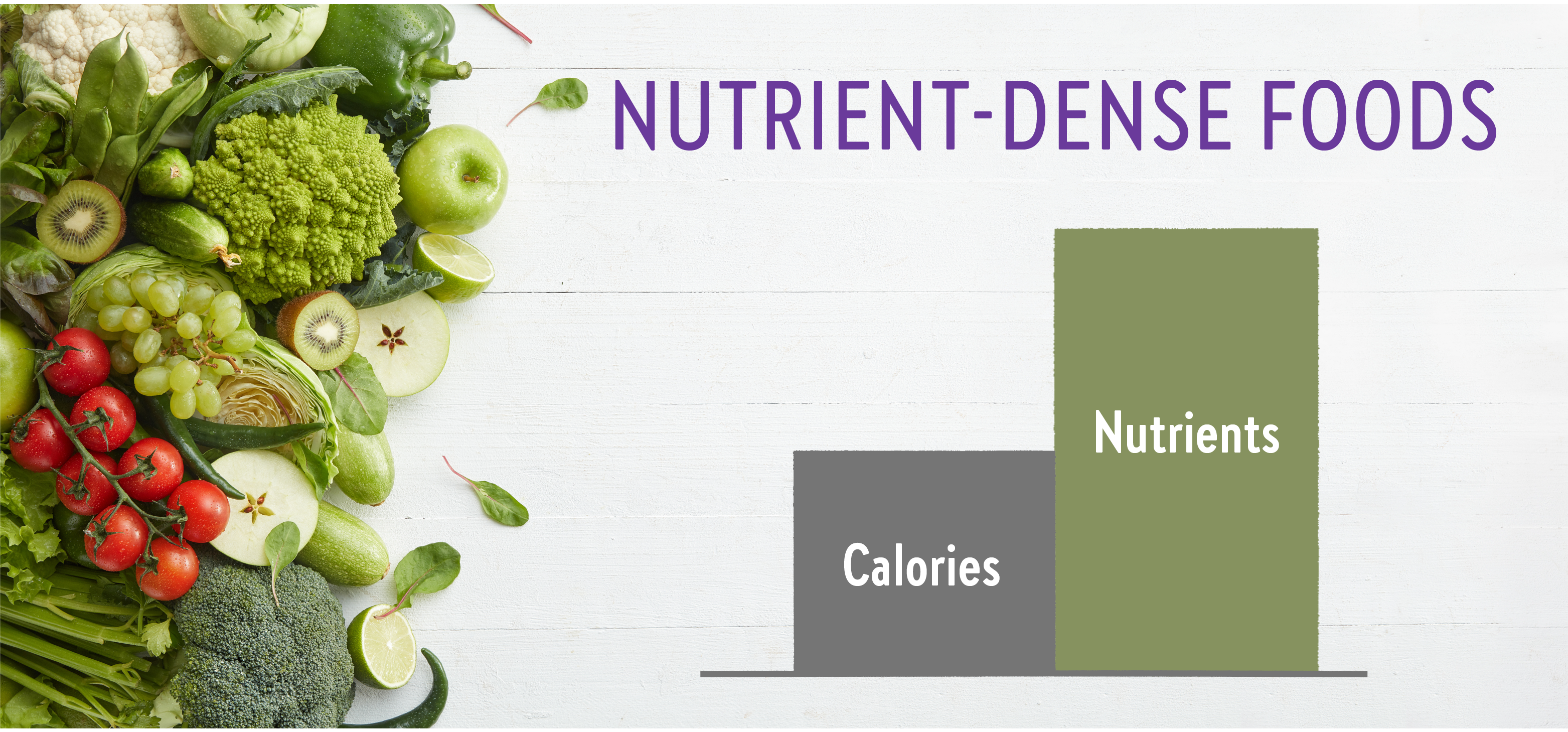
Foods with Low Nutrient Density
Let’s get down to the important stuff. What do we want to avoid? It is best to steer clear of foods that receive a low score on the nutrient density profiling scale. These foods will have a larger calorie-to-nutrient ratio per bite and will not be providing your body with the nutrients it needs and deserves. Processed foods such as cakes, candies, and sodas are just some examples of low-nutrient dense foods.
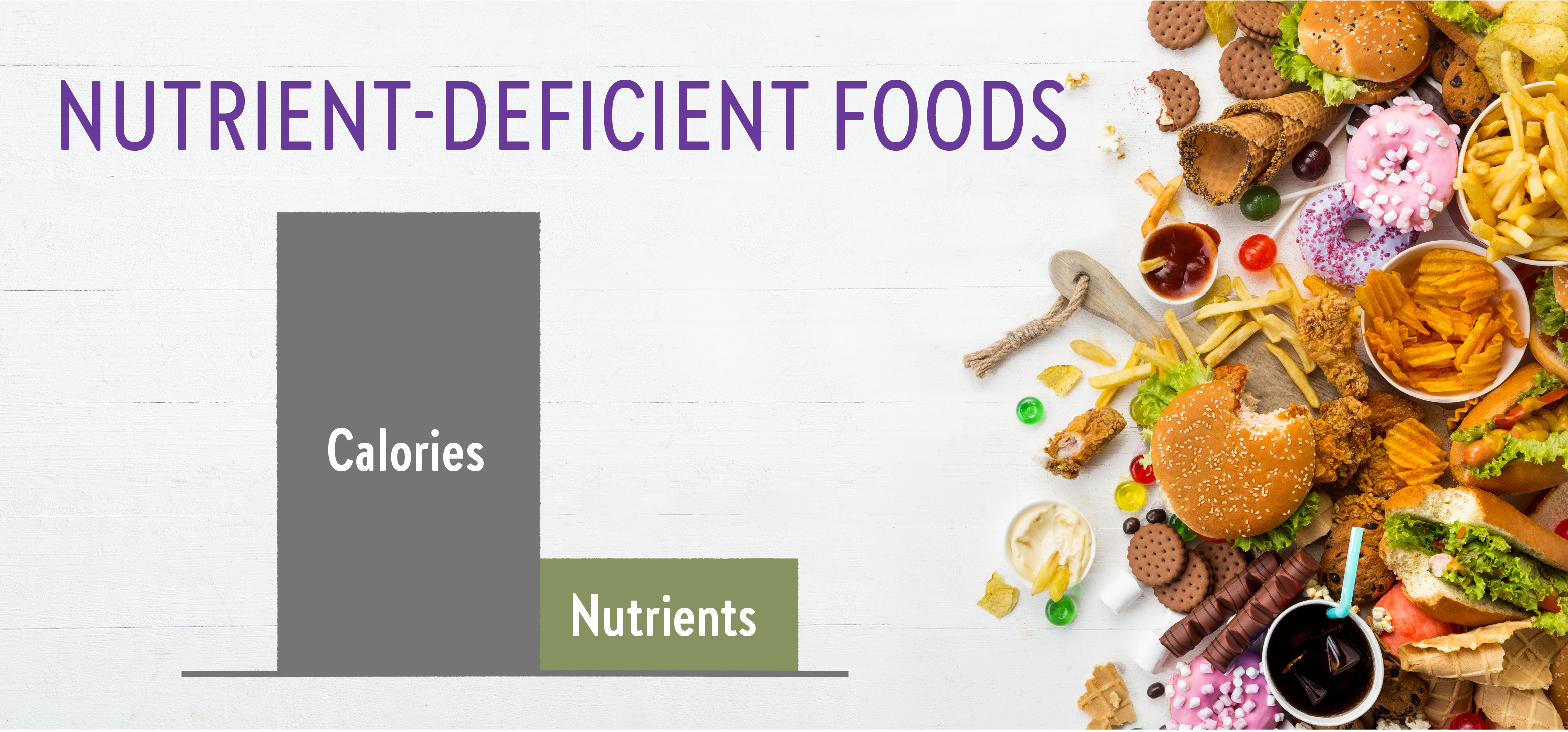
What is Causing the Decline in Nutrient Density of Produce?
The majority of commercial farmers and crop producers are continually looking to increase their crop yield which, in simpler terms, means the amount of product they grow. Through the use of genetically modified organisms, petrochemical fertilizers, herbicides, fungicides, and other synthetic continual inputs, farmers have tripled their crop yield since the mid-1950s. High planting density, a term referring to the number of crops planted in a certain area, plays a large role in the weakness of plants’ root growth and their inability to fully absorb nutrients from the soil. Current commercial agriculture methods are resoundingly driven by profit and are focused on yielding a higher quantity of food instead of working to maintain a high quality of food.
Despite the motives of the agricultural industry, what about the soil itself? The quality of soil has been declining rapidly and, with current practices, there is only about 60 years of topsoil left in some places. Fertile, biodiverse soil is the main provider of beneficial nutrients to the crops that we consume and without this, the quality of the produce we put into our bodies is suffering. The average vegetable found in today’s supermarkets are 5%-40% lower in mineral content than those from over 50 years ago. Additionally, of the 13 most important nutrients in your fruits and vegetables, 6 of their levels have declined substantially. So, let’s say you eat 10 carrots as a snack. Although your carrots might be bigger, you may have to eat more than those 10 carrots to obtain the nutritional value of 10 carrots from around 1960. After all, farmers are paid by the weight of their crops, not by nutritional value.
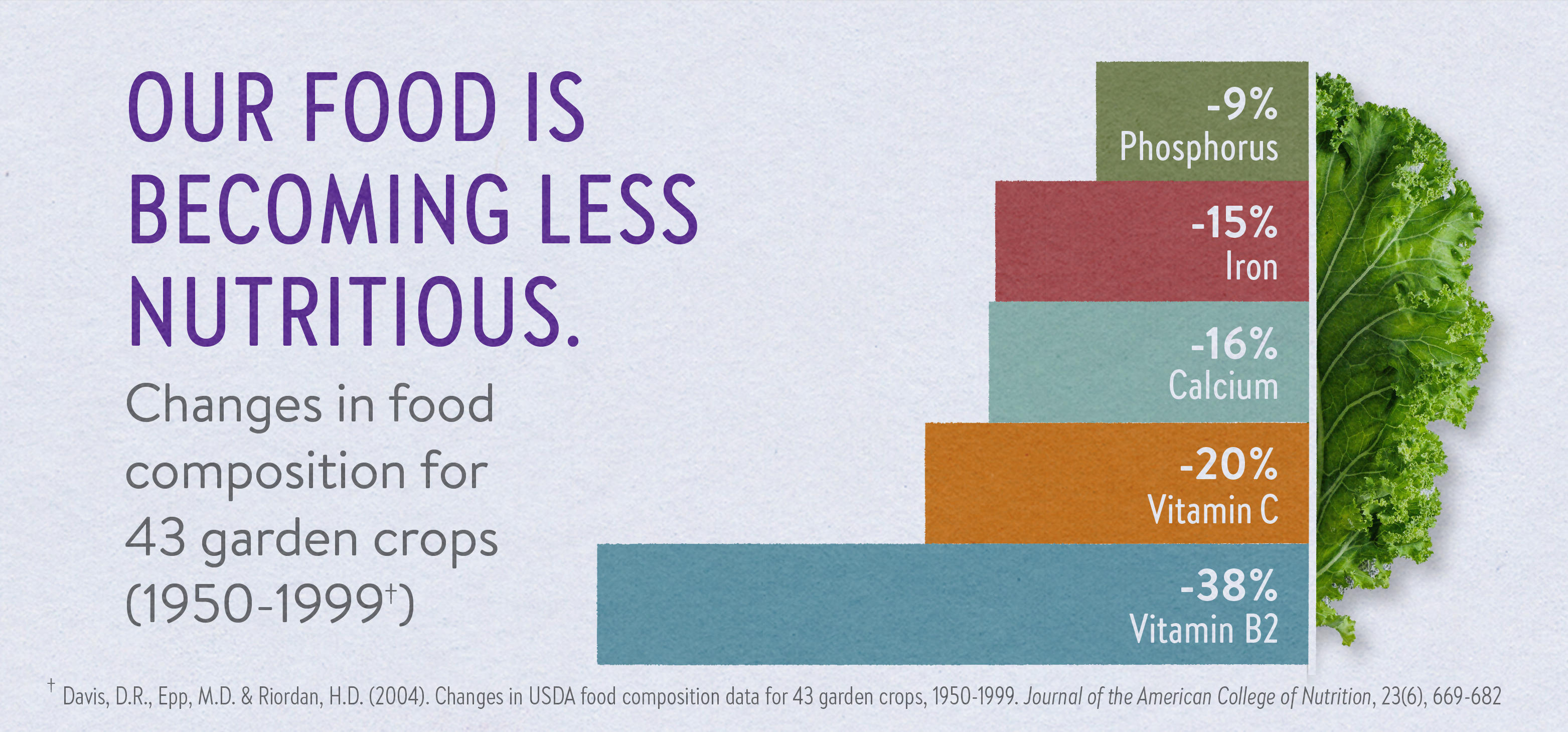
How To Prevent the Decline of Nutrient Density
The good news is that alternative practices to conventional agriculture are being explored and more widely understood. Studies have found that farming practices that enhance soil health can increase farmers’ crop yields. If the benefits of these practices, like organic and regenerative agriculture, are more publicized and acknowledged then there is a strong potential for change. The challenging part for farmers is making that initial shift away from conventional practices and more towards a regenerative, health-focused approach due to the changes in financial allocation, machinery, and potential time requirements.
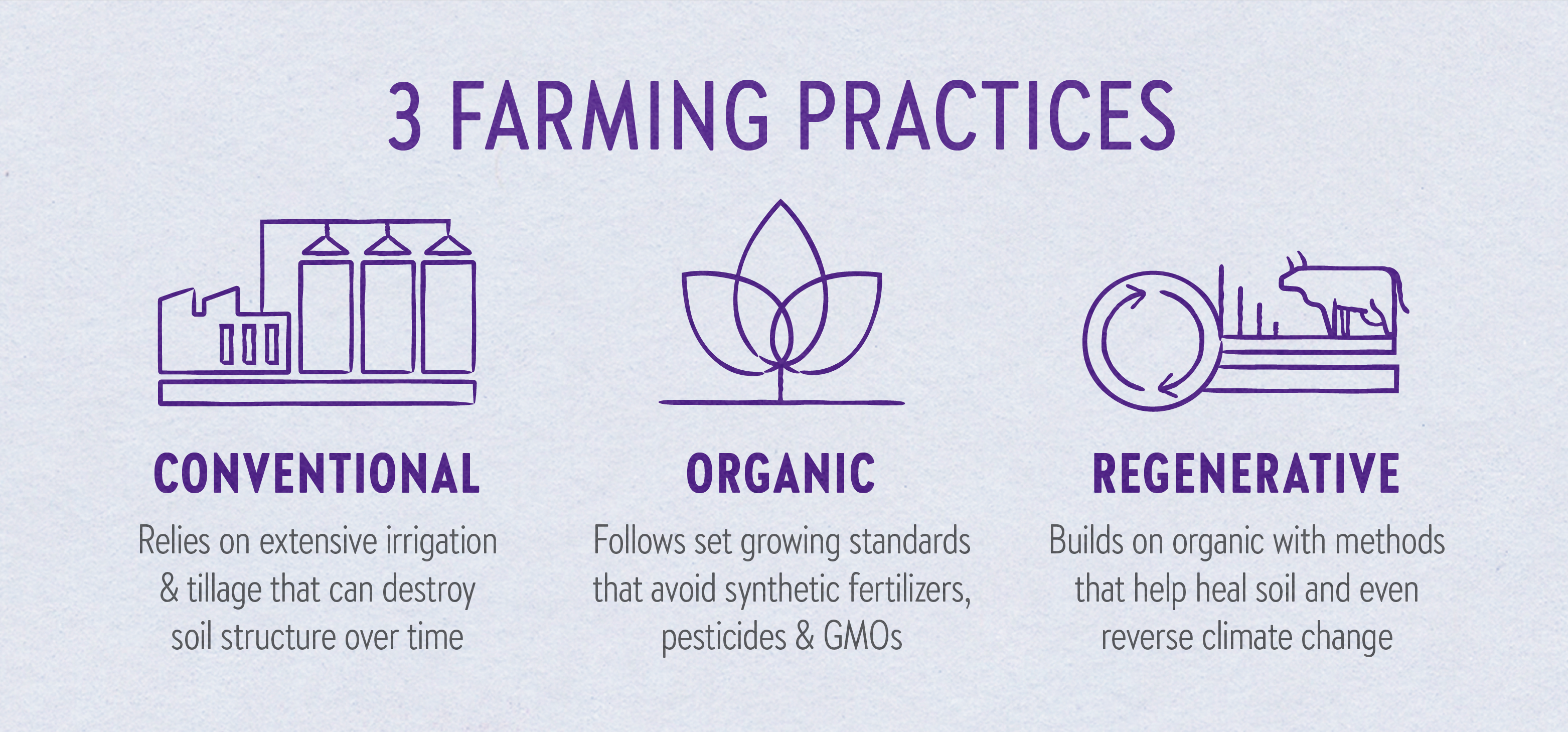
So, in addition to advocating for agricultural changes, what can you do in terms of preventing the decline of nutrient density? It is easy to look at the levels of saturated fats, added sugars, and sodium to determine the health level of a product when you are at the store. While these are important measures, it is also important to focus on the presence, or absence of, beneficial vitamins and nutrients. It is essential that we feed our bodies the quality, nutrient-dense foods that they deserve. Let’s do our part by shopping smart; know the source of your food and purchase products that will positively affect the well-being of your body. By shopping organic, you will reap the benefits of higher-nutrient foods while supporting the farmers who have invested in the organic mission to help the world.
Regenerative Agriculture
Nutrient density is highly related to regenerative agriculture. Regenerative agriculture prioritizes soil health and biodiversity and works to restore ecosystem services. By using no-till or low-till methods, cover cropping, composting, crop rotating, and rotational grazing, regenerative practices take care of the environment and ensure its products are nutrient dense like they are expected to be. These non-invasive tilling methods reduce soil disturbance, which enables soil biodiversity and minimizes the amount of carbon released into the atmosphere. Through caring for our soil, crops grow and absorb the vitamins and nutrients necessary to produce nutrient-dense foods that your body needs. In comparison to conventional agriculture, regenerative practices work to improve the lives of everything involved instead of destroying or depleting them.
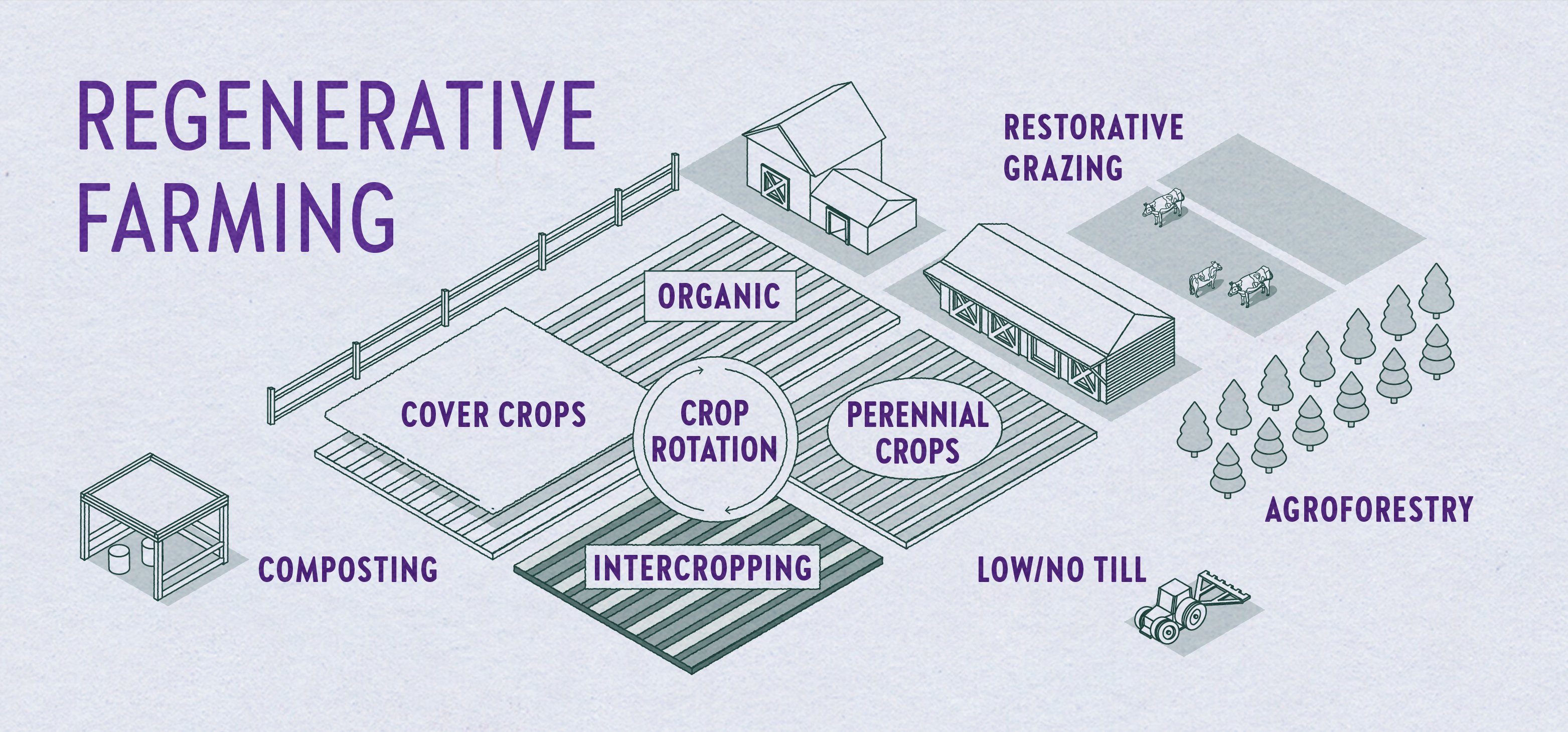
Other Ways to Get Nutrients
With the current motives in the agriculture market, we need a feasible place to get whole and necessary nutrients. For this exact reason, New Chapter has curated numerous vitamins and supplements to nourish your body and fill nutritional gaps that may exist in your diet. People, like you, can receive the nutrients that your body needs from vitamins and supplements like those at New Chapter. We source our ingredients from locations around the world to ensure they are sourced from where they grow best. Our high-quality products go through rigorous, multi-step testing processes to ensure their purity and potency. New Chapter prioritizes you to ensure you get the key nutrients your body needs in a simple, effective way. We formulate supplements for your body to absorb and recognize like food, so you get the critical nutrients you may be lacking from your diet (without even knowing it). Now that’s wellness, well done!










